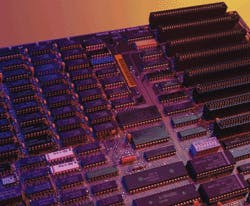MBX Systems (www.mbx.com), a contract manufacturer in Wauconda, Ill., manufactures server appliances that are used by software vendors to deliver their applications in a turnkey system, with no need for software configuration, integration and associated problems. Each customer has unique needs and specifications, from different motherboards and processors to different testing methodologies related to the specific software application involved, to the physical appearance of the appliances. Each special order complicates quality control. Or, as Chief Operating Officer Jill Bellak describes it, “There’s a whole boatload of complexity.”To address this problem, MBX has developed special production, picking, tracking and staffing procedures and also has built proprietary software to improve scheduling, balance workload distribution, and perform other manufacturing tasks. After implementation of its system, MBX realized a 41 percent decrease in system defects and a 42 percent decrease in workmanship defects. Each MBX customer has unique products—maybe one to 15 unique platforms, explains Bellak. “Because of that complexity, we had to create different controls and methodologies. But the challenges are fun. We hold a unique place in the market. We invested in systems and processes to accomplish this highly flexible manufacturing strategy in order to give us a competitive advantage,” she says.When MBX realized what a unique niche this would be, the information technology (IT) team went out looking for software packages as a foundation for the system. They found nothing that fit all their needs—especially all the required flexibility. So they developed a team that wrote a custom program. The shop floor software is all written in house, so it can be continually customized. Bellak adds, “We can pull out reporting that’s important, and manage the business using it.”Routing documentsBellak continues describing the system. “When we introduce a new platform into production, the engineering team creates a routing document identifying workcenters in manufacturing. It may include assembly to cabling to inspection to configuration center to quality control, and so on. They also identify the amount of time anticipated per workcenter. Most important is that within each workcenter are events. “So customer/platform A may need custom labels and may also have the desire to collect information from the hardware MAC address or other items, and maybe include a special test. The worker scans into the build when starting assembly. An incredibly detailed build document is fed to the worker and events fire off in background. Examples of events may be that the custom label prints automatically, then maybe custom test. The system knows if these are done. Because it’s custom, the way we built it allows us to run hundreds of systems in a day that may be on hundreds of different platforms. With the system in place, we have greatly reduced human error.”The MBX development team, consisting of 2.5 full time equivalent developers, took about nine months to finish, Bellak says. “We had an ISO inspector come in and remark, ‘That is the coolest system I’ve seen in 30 years. You should sell it.’ ” MBX grew by 116 percent last year and Bellak doesn’t think they could have managed that growth without the software system.Lean principles that MBX employs include quality at the source; that is, each workcenter that touches the product verifies the work of the preceding operation. The system has the ability to log internal defects. Then a defect review team weekly picks the highest recurring one and works on how to eliminate it.Where once MBX had a huge area dedicated to staging parts for the next build, causing builders to spend a lot of time looking for their cart, now there are just a few slots in the staging area. Instead of pick tickets, carts are equipped with Apple iPads. A big monitor on the wall tells the team when a slot opens up because a worker scanned in that he or she took it. Then the team scans the next order into the cart iPad and they can walk through with parts listed in order. The builder can pick parts efficiently, reducing time, effort, errors and space. “The guys in the back love it,” notes Bellak. “We are using technology to the fullest to not only increase speed, but reduce floor space.” MBX Systems (www.mbx.com) Gary Mintchell, [email protected], is Editor In Chief of Automation World.Subscribe to Automation World's RSS Feeds for Perspectives
Sponsored Recommendations
Sponsored Recommendations
Leaders relevant to this article:

